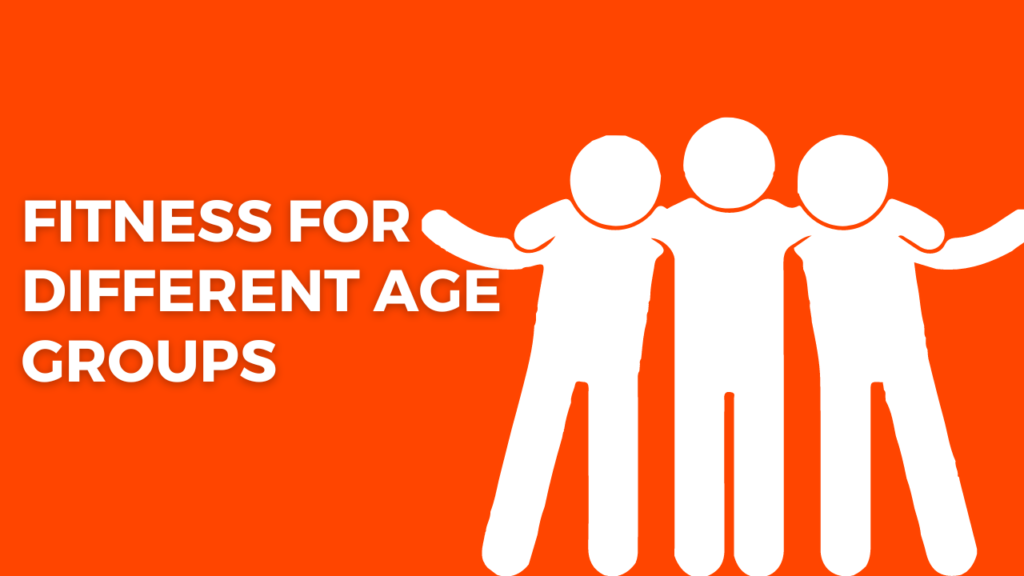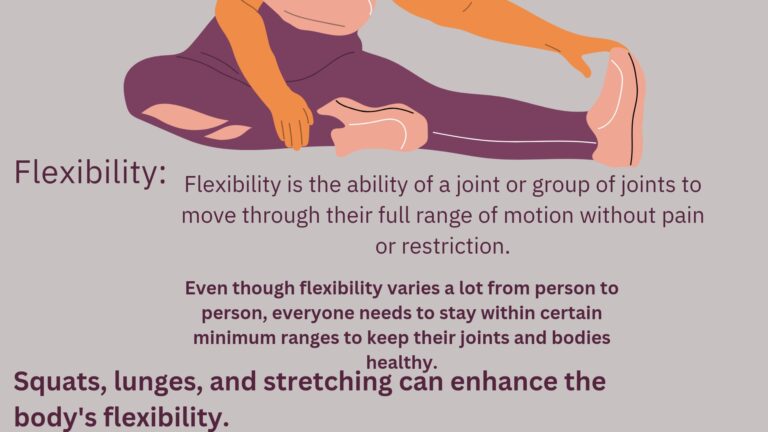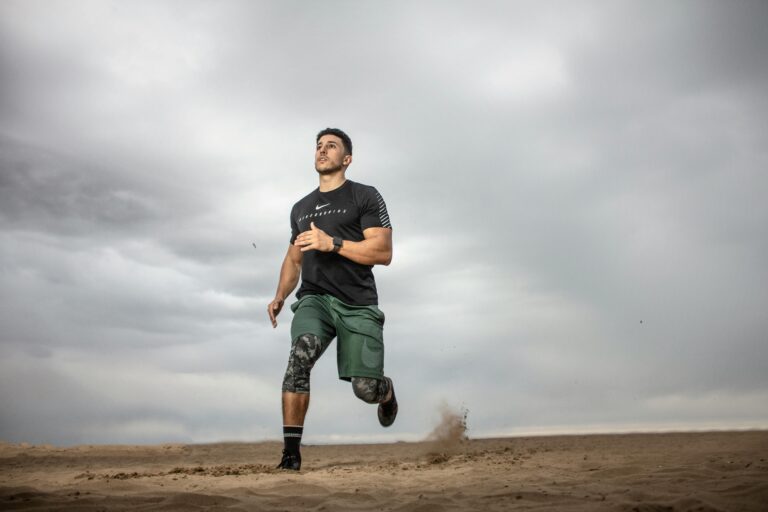Fitness for Different Age Groups

Fitness
Introduction
Absolutely, addressing fitness for different age groups is crucial as our bodies change over time, and the approach to exercise should reflect those changes. Here’s a breakdown of fitness considerations for various age groups:
-
Children and Adolescents (5-18 years old):
- Focus on developing motor skills, coordination, and overall physical literacy through play and structured activities.
- Encourage participation in various sports and activities to promote cardiovascular health, strength, flexibility, and social skills.
- Emphasize fun and enjoyment rather than strict exercise routines to instill a lifelong love for physical activity.
- Young Adults (18-35 years old):
- This age group often focuses on fitness for aesthetic purposes or sports performance.
- High-intensity workouts, strength training, and flexibility exercises are common.
- It’s crucial to develop good habits early in life to prevent injuries and maintain overall health.
- Middle-Aged Adults (35-50 years old):
- Balancing work, family, and health becomes essential at this stage.
- Incorporate strength training to maintain muscle mass and bone density, as well as cardiovascular exercises for heart health.
- Flexibility and mobility exercises are crucial to prevent stiffness and joint issues.
- Older Adults (50+ years old):
- Focus shifts to maintaining independence, mobility, and overall health.
- Low-impact exercises like swimming, walking, yoga, or tai chi can help with flexibility, balance, and joint health.
- Strength training remains crucial to combat muscle loss and maintain functional fitness.
- Seniors (65+ years old):
- Exercise becomes more about maintaining functionality and preventing falls or injuries.
- Activities focus on balance, stability, and flexibility to improve quality of life and independence.
- Water exercises, chair exercises, and gentle yoga can be beneficial.
Regardless of age, it’s vital to consult with a healthcare professional before starting any new exercise regimen, especially if there are existing health conditions. The goal is to find a balance between staying active, preventing injuries, and enjoying a higher quality of life through physical activity suitable for each age group.
Certainly! Tailoring fitness routines to different age groups is essential for promoting overall health and well-being. Here’s an overview of fitness considerations for various age groups:
1. Children and Adolescents:
- Importance of Play: Encourage active play and sports to develop fundamental movement skills.
- Structured Activities: Introduce organized activities like dance, gymnastics, or team sports.
- Limit Screen Time: Promote a balance between physical activity and screen time for a healthy lifestyle.
2. Teenagers:
- Strength Training: Introduce age-appropriate strength training with proper supervision.
- Team Sports: Encourage participation in team sports for social interaction and fitness.
- Developing Healthy Habits: Promote a balanced diet, adequate sleep, and stress management.
3. Young Adults (20s to 30s):
- Cardiovascular Exercise: Engage in regular aerobic activities for heart health.
- Strength Training: Build and maintain muscle mass to support metabolism and bone health.
- Flexibility Training: Incorporate stretching for flexibility and injury prevention.
- Establishing Consistency: Develop consistent exercise habits for long-term health benefits.
4. Middle-aged Adults (40s to 60s):
- Balance Training: Include exercises to enhance balance and reduce the risk of falls.
- Bone Health: Prioritize weight-bearing exercises to support bone density.
- Joint Health: Consider low-impact activities to protect joints.
- Stress Management: Use exercise as a stress-relief tool during busy life stages.
5. Seniors (60s and Beyond):
- Low-Impact Activities: Choose low-impact exercises like walking, swimming, or tai chi.
- Strength Training: Continue with light resistance training to maintain muscle mass.
- Flexibility and Mobility: Emphasize stretching and mobility exercises for joint health.
- Social Engagement: Encourage group activities for social interaction and motivation.
General Tips for All Age Groups:
- Consultation with Healthcare Professionals: Especially for individuals with pre-existing health conditions or those new to exercise.
- Adaptability: Modify exercises based on individual fitness levels, health conditions, and preferences.
- Consistency: Emphasize the importance of regular, consistent physical activity for long-term health benefits.
Remember, the key is to find activities that individuals enjoy, making it more likely that they’ll stick with their fitness routine over time. Additionally, adapting exercise programs as individuals age helps address changing physical capabilities and health considerations.
Conclusion
Fitness is essential across all age groups, with varying emphasis on different aspects depending on the stage of life. Whether it’s encouraging activity in children, maintaining overall fitness in young adults, focusing on strength and flexibility in middle-aged individuals, or preserving mobility and balance in older adults, the key is to find activities that suit individual capabilities and health conditions. By embracing physical activity tailored to each stage of life, individuals can enjoy improved health, vitality, and well-being throughout their lives. Remember, it’s never too late to start prioritizing fitness and reaping its benefits.







It is very comforting to see that others are suffering from the same problem as you, wow!